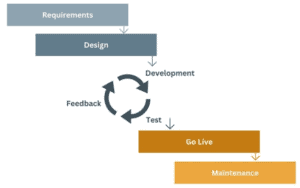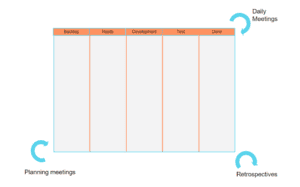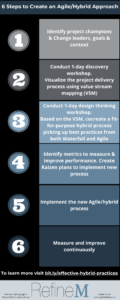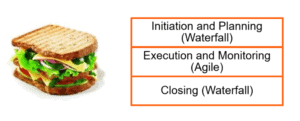Effective Hybrid Practices
/*Effective Hybrid Practices

There are few organizations that implement pure Agile. Most organizations use some form of hybrid approach; this could be any mix of Waterfall and Agile. Due to the varying needs of projects and teams, there are several ways to effectively implement hybrid practices. One example is something like this: A waterfall approach for requirements and design followed by an iterative cycle for development and testing, and back to waterfall for closing the project.
There are many reasons why an organization would choose a hybrid approach:
- Tailored approach
- Easier change management
- Increased stakeholder engagement
- Increased learning
- Innovation and improvements
- Helps stick to budget and schedule
- A way to try new methods
So, how do you know when to use a Waterfall, Agile, or hybrid approach? Here are a few scenarios where hybrid may be a good fit:
- Hybrid can be a good fit in organizations with rigid process, in companies that want to maintain organizational controls and structure but still want the opportunity to improve and update the project as it is progressing
- Projects with aggressive delivery schedules, but also with the goal of quickly developing a solution
- Projects with strict deadlines but where changes are negotiable
- Highly regulated industries
- Projects where agile is too flexible, but waterfall is too rigid
Now that you’ve decided a hybrid approach fits your organization or project, here are some best practices to implement a hybrid method effectively:
- Develop a Value Stream Map (VSM) that integrates Agile and Waterfall
- Define what Agile and Waterfall practices will be used and when
- Include the entire team as well as stakeholders in defining the process
- Have clear communication with project team and stakeholders
- Collect, analyze, and report relevant metrics
- Regularly review the process using frequent retrospectives.
If you are looking to start a new hybrid approach, here are 6 steps to create one:
During the first four steps it is especially important to cocreate, but all steps should be done with the entire team.
To give you some examples of what a Hybrid approach could look like, here are a few popular choices:
- Scrumban: this is a mix of Scrum and Kanban. You have a Kanban board that is not reset, product releases, and elements of Scrum such as a regular meeting, cadence for retrospectives, and planning meetings for prioritization.

- Water-Scrum-Fall: this is formatted like a sandwich, at the beginning initiation and planning are completed with waterfall, in the middle, execution and monitoring are in Agile, and lastly, the project closes back in waterfall
- Wagile (or watergile): in this method, Initiation and planning done with waterfall practices and execution, monitoring, and closing done with Agile
Using a hybrid method is popular for many reasons. It allows a team to reap the benefits from both Waterfall and Agile methodologies and it works in several settings where Agile may be too flexible, but Waterfall is too rigid. Regardless of the how much is Waterfall and how much is Agile, a successful hybrid approach requires team collaboration and thorough communication.
Need help creating a hybrid approach for your organization or project? Contact Enterprise Agile Coach and CEO, NK Shrivastava, at nks@refinem.com.
Want to learn more? Watch NK’s webinar on Effective Hybrid Practices.


